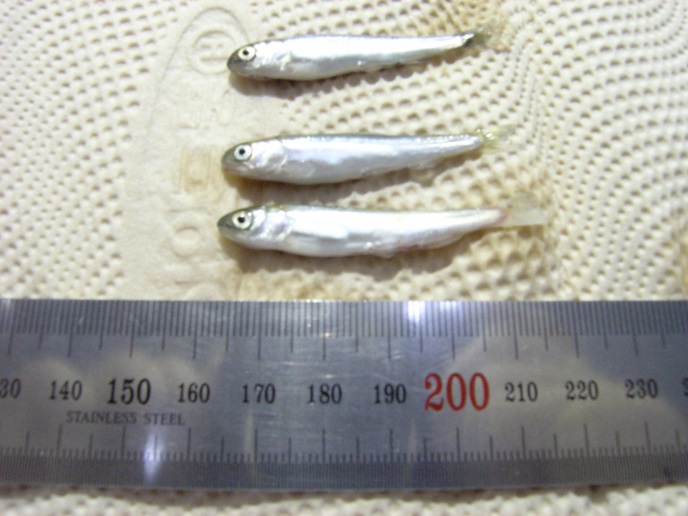salmon

Salmon is the common name for several species of Fish of the family Salmonidae. Several other fish in the family are called trout. Salmon live in both the Atlantic and Pacific Oceans, as well as the Great Lakes and other land locked lakes.
Typically, salmon are anadromous: they are born in fresh water, migrate to the ocean, then return to fresh water to reproduce. Folklore has it that the fish return to the exact spot where they were born to spawn.
In Alaska, the crossing-over to other streams allows salmon to populate new streams, such as those that emerge as a glacier retreats. The precise method salmon use to navigate has not been entirely established, though their keen sense of smell is involved. In all species of Pacific salmon, the mature individuals die within a few days or weeks of spawning, a trait known as semelparity. However, even in those species of salmon that may survive to spawn more than once (iteroparity), post-spawning mortality is quite high (perhaps as high as 40 to 50%.)
The salmon has long been at the heart of the culture and livelihood of coastal dwellers. Most peoples of the Northern Pacific shore had a ceremony to honor the first return of the year. For many centuries, people caught salmon as they swam upriver to spawn. A famous spearfishing site on the Columbia River at Celilo Falls was inundated after great dams were built on the river. The Ainu, of northern Japan, taught dogs how to catch salmon as they returned to their breeding grounds en masse. Now, salmon are caught in bays and near shore.
Spawning sockeye salmon in Becharof Creek, Becharof Wilderness, AlaskaSalmon population levels are of concern in the Atlantic and in some parts of the Pacific but in Alaska stocks are still abundant. Fish farming is outlawed and the State of Alaska's fisheries management system is viewed as the global leader in the management of wild, sustainable fish stocks. The most important Alaska Salmon wild sustainable fisheries are located near the Kenai River, Copper River, and in Bristol Bay. In Canada, the Skeena River wild salmon returning which support commercial fisheries, aboriginal food fisheries, sports fisheries and the area's diverse wildlife on the coast and around communities hundreds of miles inland in the watershed. The Columbia River salmon population is now less than 3% of what it was when Lewis and Clark arrived at the river.[1]
Both Atlantic and Pacific Salmon are important to recreational fishing around the world.

